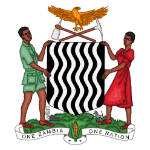Background
The Zambia RMNCAH Scorecard was developed in 2014 with support from ALMA under the Ministry of Community Development, Mother and Child Health. The RMNCAH Scorecard had seven national level indicators and 27 subnational indicators, spread across the RMNCAH continuum of care. In 2016, with support of AKROS, the RMNCAH scorecard was decentralised to district level and piloted in two provinces (Copperbelt and Lusaka), across 11 districts. The scorecards were used during the District Integrated Meetings (DIM) to highlight performance across selected indicators and provided a platform for discussions and formulation of recommendations and action points to address identified gaps. With support from Systems for Better Health (SBH) a USAID funded project, the scorecard was automated with the development of an App on the DHIS2 platform. A number of district level scorecards by programme area are now in use at district level. In 2020, the scorecard was linked to Zambia’s national health information system, DHIS2.
How it works
The scorecard is populated using DHIS2 at the national level. The scorecard is used to generate and track actions through existing coordination mechanisms at both national and subnational level.
The scorecard is used during the District Integrated Meetings (DIM) to highlight performance across selected indicators and provides a platform for discussions and formulation of recommendations and action points to address identified gaps. In the RMNCAH Government to Government Continuum of Care (G2G COC) supported districts, the scorecards are regularly reviewed and actions generated.
Impact
Because of the colour codes, it is easy to pick faltering indicators and therefore, easy to prioritize areas of attention. For example, Institutional delivery was very low from the era of traditional birth attendants and this has recently attained very high coverage as a result of the attention that has been given to it. The score card also allows holistic indicator analysis and identify underperforming areas of the continuum of care like Adolescent health and new-born Health.
Key success factors
- Linked to DHIS2, which has improved scorecard data quality and permits the inclusion of health facility level data, conducive to decentralized use of scorecard at the lowest levels.
- Decentralised, with the scorecard used at the district level for priority setting, planning and budgeting.
